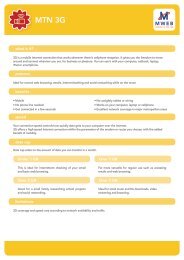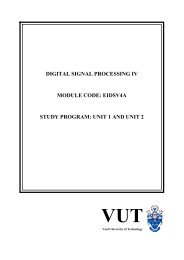Conjecture and Proof with Sketchpad: A case study - Mweb
Conjecture and Proof with Sketchpad: A case study - Mweb
Conjecture and Proof with Sketchpad: A case study - Mweb
You also want an ePaper? Increase the reach of your titles
YUMPU automatically turns print PDFs into web optimized ePapers that Google loves.
Distance Q to a = 5.58 cmDistance Q to b = 1.61 cmDistance Q to c = 2.25 cm(Distance Q to a) 2 2 2 2+ ( Distance Q to b) + ( Distance Q to c) = 38.84 cmPA = 5.75 cmPB = 2.16 cmPC = 5.20 cmPA 2 + PB 2 + PC 2 = 64.74 cm 2AQcbPBaCPA 2 + PB 2 + PC 2(Distance Q to a) 2 + ( Distance Q to b)2 + ( Distance Q to c)2= 1.67Figure 1Investigate these theorems dynamically <strong>with</strong> the use of <strong>Sketchpad</strong>!1. If you do not have <strong>Sketchpad</strong>, first download a FREE DEMO of it from:http://www.keypress.com/sketchpad/sketchdemo.html2. Then download the following to dynamically investigate these theorems:http://mzone.mweb.co.za/residents/profmd/conject.zip<strong>Proof</strong> of first resultConsider Figure 2 where the equilateral ∆ABC has been placed <strong>with</strong> itsincentre/circumcentre at (0;0). Without loss of generality, let A( 0; 2a ), B( − 3a; − a ),C( 3a; − a ) <strong>and</strong> P( x; y ). Then the incircle is x 2 + y 2 = a 2 <strong>and</strong> PA 2 + PB 2 + PC 2
















